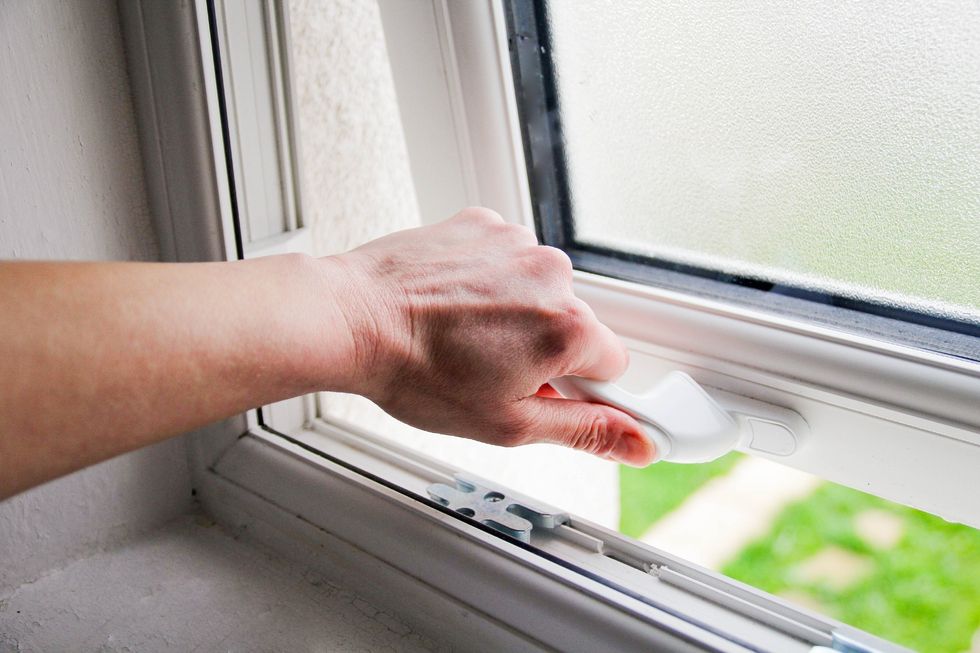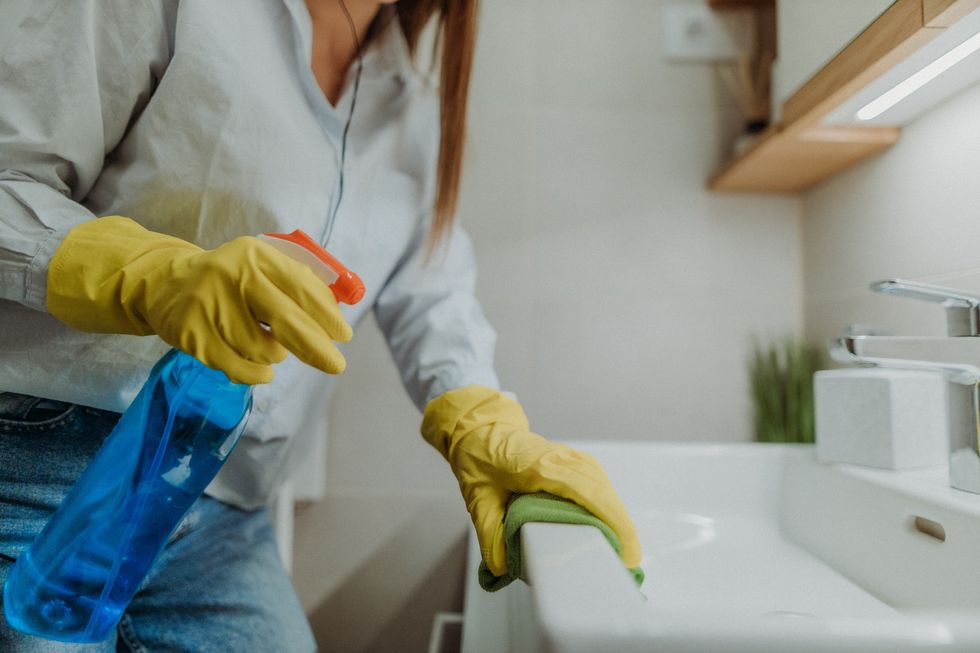Pink mould: Britons urged to make crucial bathroom check or risk severe health hazards

In rare cases, exposure to pink mould can lead to pneumonia
Don't Miss
Most Read
Latest
Homeowners have been issued an important warning about pink mould in bathrooms, which can lead to respiratory issues and other health concerns.
Pink mould (also known as Serratia marcescens) is a waterborne bacterium that loves damp, warm spots around your home, such as showers and baths.
According to cleaning specialists at Hygiene Pro Clean, health risks from pink mould exposure can range from "mild" irritation to more "severe" issues.
**ARE YOU READING THIS ON OUR APP? DOWNLOAD NOW FOR THE BEST GB NEWS EXPERIENCE**
Common symptoms include allergic reactions like coughing, sneezing, eye irritation, and skin rashes, plus bladder infections, bronchitis, and urinary tract infections. In "rare" cases, those affected have contracted pneumonia.
While not everyone exposed will develop symptoms, Hygiene Pro Clean advises that anyone experiencing these issues should see a doctor and consider calling in professional mould removal services.
The UK Government also provides important information on the health risks of damp and mould in the home.
Officials have warned: "Damp and mould primarily affect the airways and lungs, but they can also affect the eyes and skin. The respiratory effects of damp and mould can cause serious illness and, in the most severe cases, death.
"Everyone is vulnerable to the health impacts of damp and mould, but people with certain health conditions, children, and older adults are at greater risk of more severe health impacts."
In light of this, property expert Robert Quinton at Construction Megastore Building Materials has shared key tips for preventing, spotting, and combating pink at home.
LATEST DEVELOPMENTS:

'Opening a window after a shower can make a big difference'
|GETTY
How to prevent pink mould
Seal bathroom tiles
"Pink mould loves damp places, so it's important to stop water from soaking into your tiles. Make sure the grout is properly sealed and use silicone sealant to fix any gaps. This helps prevent moisture and makes it harder for mould to grow."
Keep your bathroom ventilated
"Try to keep bathroom surfaces as dry as possible. Wipe down wet areas after using the shower or bath, and make sure the room is well ventilated. An extractor fan helps move damp air out, but even just opening a window after a shower can make a big difference."
Regularly clean the bathroom
"Cleaning your bathroom often is the best way to stop mould in its tracks. Focus on areas where mould tends to appear, like shower curtains, tiles and grout. Keeping these dry and free from build-up removes the conditions mould needs to grow."

'Cleaning your bathroom often is the best way to stop mould in its tracks'
| GETTYSigns you have pink mould in your home
Pink or reddish marks in damp areas
"One of the most common signs of pink mould is the appearance of pink or reddish marks in damp places such as showers and bathtubs. These patches can look either slimy or slightly fuzzy, and they often darken if not cleaned promptly."
Stains that return after cleaning
"If you've cleaned away pink stains and they reappear soon after, pink mould is likely the cause. This type of mould thrives in moisture and can be difficult to get rid of unless the source of dampness is also dealt with."
Musty or sweet smell
"Pink mould doesn’t always produce a strong smell, but you might notice a faint musty or slightly sweet scent, particularly in areas with poor ventilation, such as bathrooms or under sinks."
Slimy coating on bathroom items
"Pink mould can leave a slippery pink coating on everyday bathroom items, particularly shampoo bottles. If you spot an unusual film on these objects, it could indicate the presence of mould."
Unexplained skin or breathing problems
"Pink mould can cause skin rashes, breathing difficulties, or urinary infections, especially in people with lower immunity. If symptoms like these seem worse when you’re at home, mould could be playing a role."
How to get rid of pink mould
Create your cleaning solution
"To begin, combine one teaspoon of sodium bicarbonate and one teaspoon of washing-up liquid with two cups of water. If you're dealing with a large surface of pink mould, you might want to double the amount. Ensure you are wearing protective gear like gloves and a mask to shield yourself from any bacteria or cleaning chemicals."
Clean shower accessories first
"It's important to remove and clean your shower curtain and liner first, as the bacteria behind pink mould can also grow on fabric and plastic. If they’re machine-washable, put them in the washing machine using your regular detergent and wash with warm or hot water. Let them dry naturally outdoors or hang them on an airer."
Scrub the affected areas
"Focus on the areas with visible pink mould by dipping a nylon-bristle brush into your homemade cleaning paste and start scrubbing. Work from the top down to help stop bacteria from spreading to areas you’ve already cleaned. Rinse everything thoroughly using the shower head."
Prepare a cleaning solution
"Mix equal parts warm water and bleach in a spray bottle, and spray it generously over the cleaned surfaces. Leave it to sit for about 10 to 15 minutes, then scrub once more using a fresh brush. When that’s done, rinse the area well and dry it completely. You can use a towel or squeegee to remove any leftover moisture and help prevent the mould from coming back."











